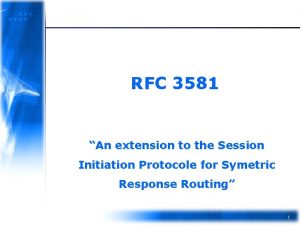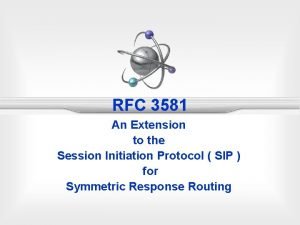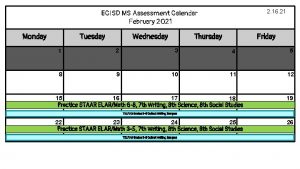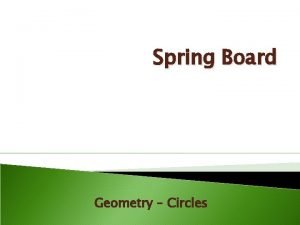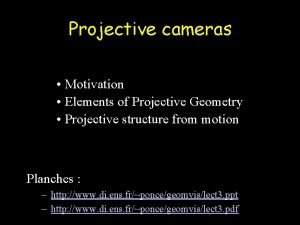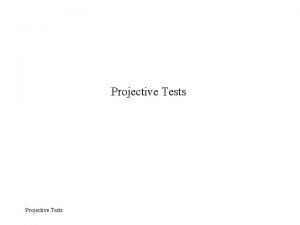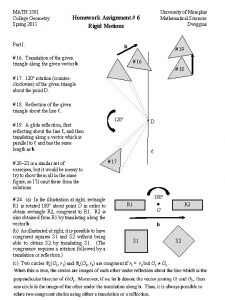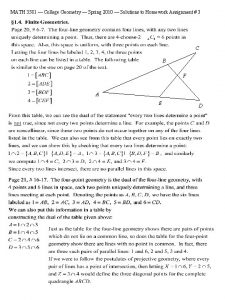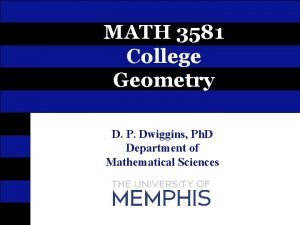MATH 3581 College Geometry Spring 2011 Projective Geometry







- Slides: 7

MATH 3581 College Geometry Spring 2011 Projective Geometry University of Memphis Mathematical Sciences Dwiggins I composed these notes during summer 2002, based on a textbook I found in the campus library. This book, An Introduction to Projective Geometry, was authored by C. W. O’Hara and D. R. Ward and submitted on 14 Sep 1936. It was printed by Oxford University Press in 1937, and reprinted three times during the 1940’s. As far as I know it is still on the shelf in our library; the call number is QA. 471. O 5. Here is the table of contents. I. Historical and Critical Discussion II. Propositions of Incidence III. Perspectivity and Projectivity IV. The 4 -Point and 4 -Line Figures V. The Conic VI. Further Theorems on Conics VII. The Non-Homogeneous Mesh Gauge VIII. The Homogeneous Mesh Gauge IX. The Metric Gauge X. Singular Metric Gauges XI. Transformations of the Mesh Gauge XII. Further Development Obviously, we will not cover this entire textbook in MATH 3581, but this gives the outline of a 4000/6000 level course in projective geometry. We will cover the topics in chapters II, IV, and discuss a little bit of V, projective conic sections. The rest of the topics on Mesh Gauges is a development of how projective geometry can be used to finally arrive at a postulate of measure, even if we don’t start with one. We will talk a little bit about that idea as well. The initial discussion (chapter I) stresses that no geometric construct will have an a priori definition. That is, terms such as “point” and “line” will remain undefined, and other terms such as collinearity and coincidence will be defined only in terms of the postulates and the axioms of set theory. There will be no parallel postulate (in fact, at first no parallel lines at all), and there will be no postulate of measure. Any metrical concepts such as distance, angular measure, or even “between-ness” will have no initial meaning, although some definitions relating to these concepts will be developed as the discussion progresses. The only thing we will start with is postulates concerning when lines are concurrent and when points are collinear. There is a rudimentary form of a coordinate system (“number triples”) which sometimes helps to illustrate a certain concept, but it is not necessary to the development of theory. Finally, along the way we will point out when certain results from Euclidean geometry can be obtained as specific applications of the principles of projective geometry.

Propositions of Incidence




Projective Coordinate Systems, Part I:

A Logic Puzzle

